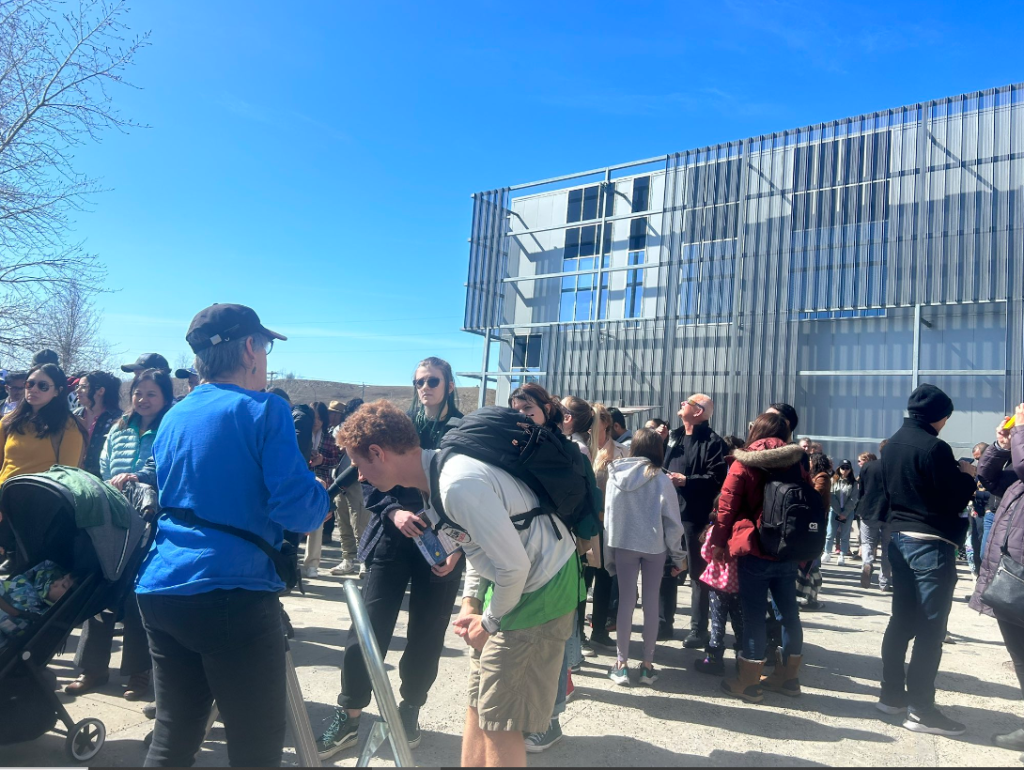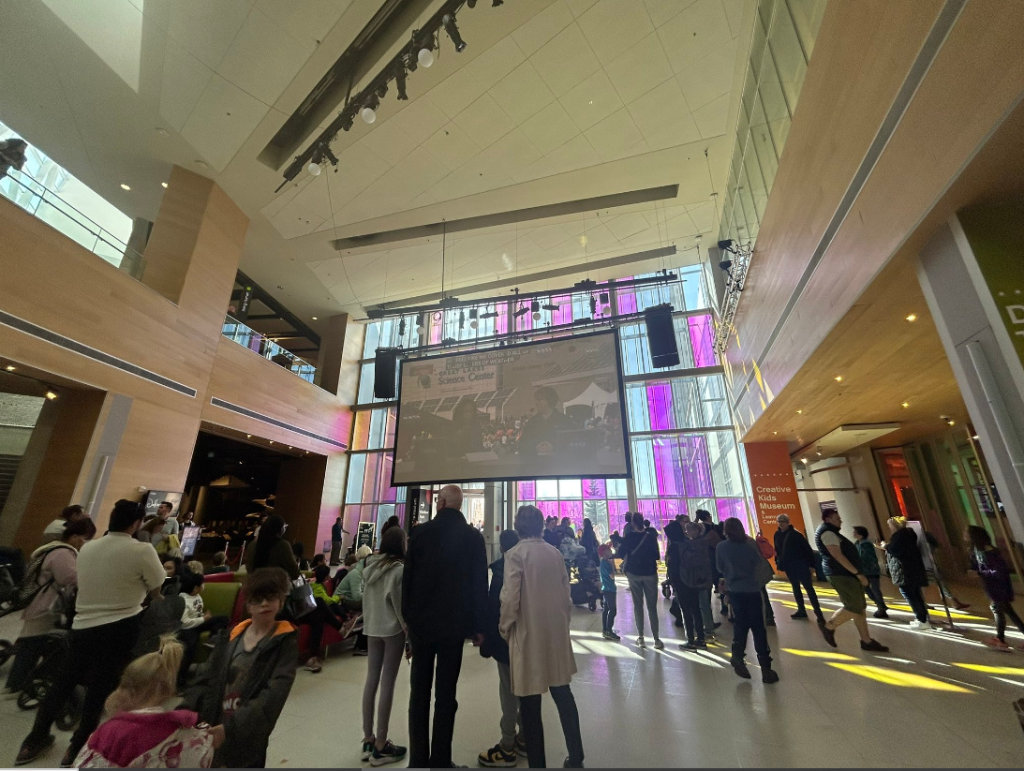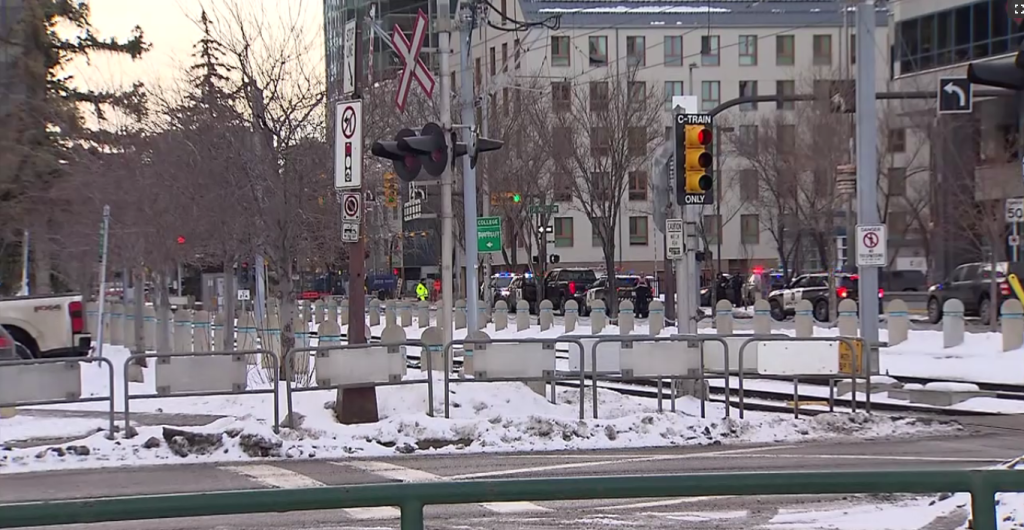Calgarians gather by the hundreds to take in partial eclipse

Posted Apr 8, 2024 4:09 pm.
Last Updated Apr 9, 2024 1:09 pm.
It was a busy day at TELUS Spark Science Centre on Monday afternoon, as hundreds of Calgarians showed up to witness a phenomenon in the sky.
The centre in northeast Calgary was celebrating the partial eclipse, which experts say is something that won’t be able to be seen for another twenty years or so.
Calgarians of all ages stood outside the centre in awe as the moon passed between the earth, blocking out 40 per cent of the sun. The partial eclipse began around 11:48 a.m. and ended around 1:38 p.m.

Calgarians gather at TELUS Spark Science Centre to take in a partial eclipse on Apr. 8, 2024. Dione Wearmouth/CityNews
Eclipses happen two to five times a year, according to Zack Anderson with TELUS Spark, however the fact that it could actually be seen this time make it a “rare celestial event.”
“You can actually see that the sun is partially blocked out right now, it looks like a bite has been taken out of the sun,” he said.
The centre set up a special live feed from NASA so attendees could also get a glimpse of the full eclipse that spanned other parts of North America.

Anderson said he was pleasantly surprised with the event’s outcome, adding it was one of the top ten busiest days he’s ever seen at the centre.
“These kind of events, to have one like this over an area where there’s lots of people, lots of ability to look at it and do research, that’s pretty special,” he says.
Many attendees also told CityNews they were excited to see so many other eclipse enthusiasts turn out for Monday’s event.
“It’s pretty neat,” one woman said. It’s really neat to be here, with this vibe and all the other people really interested in seeing such a cool scientific phenomenon.”
The partial solar eclipse could be seen from almost everywhere in North America, while the total solar eclipse could only be seen from select areas where the moon perfectly lined up between the earth and the sun, completely blocking out the sunlight.
WATCH: Darkness blankets Niagara Falls during solar eclipse
Eclipse watchers in southwestern Ontario were the first on Canadian soil to experience the eclipse, before the path of totality moved into Quebec and Atlantic Canada, exiting Newfoundland about 30 minutes later.
Around one million people descended on Niagara Falls and the cloudy conditions slightly eased in the area so those who gathered were able to get the full effect of the eclipse as the city descended into near total darkness for several minutes.








